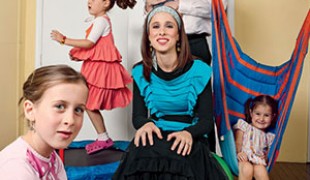- 6963
- 451
- 8
- 9
- 0
- Help Ukraine
About the solution
For a hockey coach, having his kids on ice skating is an enormous pride. For Derek it couldn’t be more true.
Derek’s oldest son, Dillon, was diagnosed on the autism spectrum when he was two years old. At age seven he decided to try skating after watching his younger brother, Dawson.
However, teaching Dillon to skate was a big challenge for Derek.
“It’s risky, right? And he’s not a risk taker at all. So for the first eight weeks, he’d just kind of walk and then glide. I remember thinking, ‘how am I going to get him to take a stride?'”, Derek said.
“Us coaches, we have 18 kids on the ice at a time, it’s hard to break down things to that level, but for his success I had to. So because I had to, it made me think of an accelerated way of learning.”, Derek reinforced.
In the summer of 2016, when Gerard, Derek’s longtime friend, moved back to Calgary, the two single dads were dealing with financial pressure in a difficult employment environment, so they joint forces. In a very short time, a prototype of the Tornado’s Edge was designed and fabricated. The skating trainer not only worked for Dillon, but for some other kids Derek had been coaching.
“The small steps for him (Dillon) were big…because for him, it was a real struggle and he was able to overcome it.”, Derek said.
The first on-ice trial of the skating trainer was a huge success. With the help of local manufacturing/fabrication, the entrepreneur train was in motion. The success of the trainer was very rapid. The versatility of the innovation keeps surprising the founders. Applications keep evolving in hockey, ringette, figure skating, rollerblading, and speed skating. The supporting nature of the trainer assists young skaters, individuals with physical disabilities, adults needing extra support, seniors relying on support, individuals with vision impairment. The trainer expands the ability for everyone to have an enhanced ice experience.
“I don’t think they really understand what they’re learning,” Derek said. “They just want to go around and when you get them doing that crossover, which is not a natural thing for anybody, it’s pretty incredible how quickly they pick things up.”
Adapted from: https://globalnews.ca/news/3286933/autistic-son-inspires-calgary-dad-to-...
More info: http://tornadosedge.com
https://www.youtube.com/watch?v=l4lZIwdwxqM
This solution shall not include mention to the use of drugs, chemicals or biologicals (including food); invasive devices; offensive, commercial or inherently dangerous content. This solution was not medically validated. Proceed with caution! If you have any doubts, please consult with a health professional.
DISCLAIMER: This story was written by someone who is not the author of the solution, therefore please be advised that, although it was written with the utmost respect for the innovation and the innovator, there can be some incorrect statements. If you find any errors please contact the patient Innovation team via info@patient-innovation.com
-
-
520
-
6
-
9737

Parents create solutions for children with special needs
-
-
-
273
-
1
-
3029

Mother invents drone to help track her autistic child
CAREGIVING
COMMUNICATION: Communicating, whether by speaking, listening, or other means
Autism
Alzheimer's Disease
Assistive Daily Life Device (to help ADL)
Assistive Technology access
Anxiety
Difficulty concentrating or making decisions
Difficulty coordinating movements
Muscle weakness
Loss of balance
Social withdrawal or isolation
Difficulty speaking or understanding speech
Memory loss
Irritability or anger outbursts
Confusion
Restlessness or feeling slowed down
Sleep disturbances
Loss of interest or pleasure in activities (anhedonia)
Mood swings
Sensitivity to light or sound
Fatigue
Managing Neurological Disorders
Preventing (Vaccination, Protection, Falls, Research/Mapping)
Caregiving Support
Child and Adolescent Psychiatry
General and Family Medicine
Neurology
Pediatrics
Psychiatry
United States
-
-
-
785
-
0
-
18163

System to track autistic children
CAREGIVING
COMMUNICATION: Communicating, whether by speaking, listening, or other means
Social interaction
Autism
Assistive Daily Life Device (to help ADL)
Body-Worn solutions (Clothing, accessories, shoes, sensors...)
App (Including when connected with wearable)
Anxiety
Difficulty concentrating or making decisions
Social withdrawal or isolation
Restlessness or feeling slowed down
Loss of interest or pleasure in activities (anhedonia)
Promoting self-management
Managing Neurological Disorders
Preventing (Vaccination, Protection, Falls, Research/Mapping)
Caregiving Support
Child and Adolescent Psychiatry
Medical Genetics
Neurology
Pediatrics
Psychiatry
Israel
-
 en
en